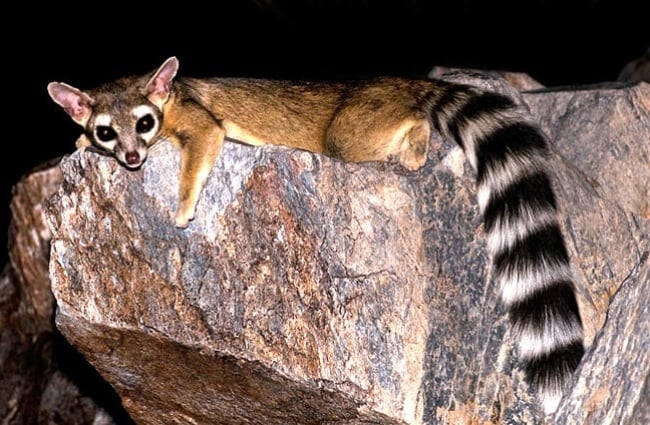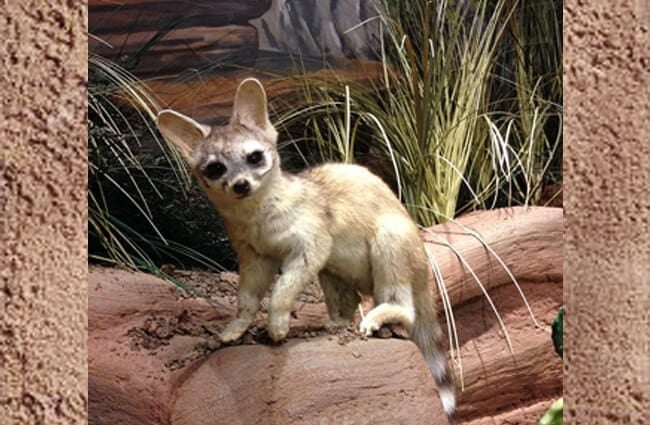Introducing the Ringtail: A Master of the American Southwest
Often called the “miner’s cat” or “ringtail cat,” Bassariscus astutus is a fascinating and elusive mammal native to the southwestern United States and Mexico. Despite its name, the ringtail is not a cat, but a member of the raccoon family, and possesses a unique combination of traits that make it superbly adapted to its environment. This guide delves into the world of the ringtail, exploring its biology, behavior, habitat, and its interactions with both the natural world and humans.

What Does a Ringtail Look Like?
The ringtail is a relatively small mammal, typically measuring between 28 and 36 inches in total length, including its distinctive tail, which accounts for roughly half of this length. They usually weigh between 1 and 3 pounds. Its coat is generally a grayish‑brown color, with white markings on the throat, belly, and feet. The most defining characteristic is its tail. Covered in dense, black and white rings, the tail is bushy and acts as a counterbalance during climbing, and also provides insulation during cold weather. Its ears are large and rounded, and it possesses keen eyesight and an excellent sense of smell.
Habitat and Distribution
Ringtails are found primarily in arid and semi‑arid regions of the southwestern United States, including Arizona, California, Colorado, Nevada, New Mexico, Oklahoma, and Texas. They also inhabit mountainous areas, canyons, and brushlands, preferring sites with rocky outcrops and dense vegetation for shelter. They can survive at elevations ranging from sea level up to 9,000 feet. These adaptable creatures thrive in areas that provide sufficient cover and access to water sources.
Diet and Foraging Behavior
Ringtails are opportunistic omnivores, meaning they will consume a wide variety of foods. Their diet includes insects, small mammals such as rodents and rabbits, birds, lizards, berries, fruits, and occasionally human food if they venture into populated areas. They are skilled hunters, using their agility and keen senses to capture prey. Ringtails are primarily nocturnal, so they are most active at night when they forage for food. They have a reputation for raiding chicken coops and gardens, earning them an unfavorable reputation with some ranchers and homeowners.
Reproduction and Life Cycle
Ringtails typically breed once per year, with the mating season occurring from December to February. Females give birth to a litter of two to four kits after a gestation period of around 50 to 53 days. The kits are born blind and helpless and rely entirely on their mother for care. They are weaned at about eight to ten weeks old and begin to learn hunting and survival skills from their mother. They reach sexual maturity at around eight to twelve months old. The average lifespan of a ringtail in the wild is estimated to be around seven to ten years.

Ringtails and the Ecosystem
Ringtails play a vital role in their ecosystem. As predators, they help control populations of rodents and other small animals. They also contribute to seed dispersal by consuming fruits and berries. Their foraging activities can help aerate the soil and promote plant growth. They are, in turn, preyed upon by larger predators such as coyotes, bobcats, and owls, forming an integral part of the food web.
Evolutionary History
The ringtail belongs to the Procyonidae family, which includes raccoons, coatis, and kinkajous. Fossil evidence suggests that the ancestors of ringtails first appeared in North America during the Miocene epoch, roughly 23 to 5 million years ago. Over millions of years, the ringtail evolved into its present form, adapting to the arid and rugged environments of the southwestern United States and Mexico. Their physical characteristics, such as their agile bodies and ringed tails, reflect adaptations to a life of climbing and foraging in rocky terrain.
Ringtails and Humans
Historically, Native American tribes revered the ringtail, often associating it with good luck and using its fur for clothing and ceremonial purposes. Miners in the American West nicknamed the ringtail “miner’s cat” because it often frequented mines, preying on rodents that infested the shafts. Today, the ringtail is generally considered a beneficial animal, helping control pest populations. However, they can sometimes cause problems by raiding gardens or entering homes in search of food and shelter. Conflicts are usually minor and can be avoided by securing food sources and sealing potential entry points.
Encountering a Ringtail in the Wild
If you are fortunate enough to encounter a ringtail in the wild, it is best to observe it from a distance. Avoid approaching or attempting to feed the animal. Remember that ringtails are wild animals and should be treated with respect. If a ringtail appears sick or injured, contact your local animal control or wildlife rehabilitation center.
Caring for Ringtails in Captivity
Zookeepers and wildlife rehabilitators caring for ringtails in captivity must provide a stimulating and enriching environment. This includes providing a large enclosure with plenty of climbing structures, hiding places, and opportunities for foraging. A varied diet consisting of meat, fruits, and vegetables is essential. Regular veterinary care and monitoring of the animal’s health are also crucial. It’s important to avoid overhandling and allow the ringtail to maintain its natural behaviors.

Interesting Facts about Ringtails
- Ringtails are excellent climbers and can scale trees and rock faces with ease.
- They can rotate their hind feet 180 degrees, allowing them to descend trees headfirst.
- Ringtails are capable of making a variety of vocalizations, including chirps, whistles, and growls.
- They mark their territory using scent glands located on their paws and anal region.
- Ringtails are known to cache food for later consumption.
- They can survive for extended periods without water, obtaining moisture from their prey and vegetation.
- Their eyes possess a tapetum lucidum, a reflective layer that enhances their vision in low‑light conditions.
Conservation Status
While ringtails are not currently listed as threatened or endangered, their populations are facing habitat loss and fragmentation due to human development. Conservation efforts focused on protecting and restoring their habitat are essential to ensure their long‑term survival. Supporting responsible land management practices and promoting public awareness about the importance of ringtails are also crucial steps.
The ringtail, a fascinating and adaptable creature, continues to captivate and intrigue. Its unique characteristics, ecological role, and intriguing behavior make it a valuable part of the southwestern landscape. By understanding and appreciating this remarkable animal, we can help ensure its survival for generations to come.

![Red Angus Closeup of a beautiful Red Angus cowPhoto by: U.S. Department of Agriculture [pubic domain]https://creativecommons.org/licenses/by/2.0/](https://animals.net/wp-content/uploads/2020/03/Red-Angus-4-238x178.jpg)




![Red Angus Closeup of a beautiful Red Angus cowPhoto by: U.S. Department of Agriculture [pubic domain]https://creativecommons.org/licenses/by/2.0/](https://animals.net/wp-content/uploads/2020/03/Red-Angus-4-100x75.jpg)

